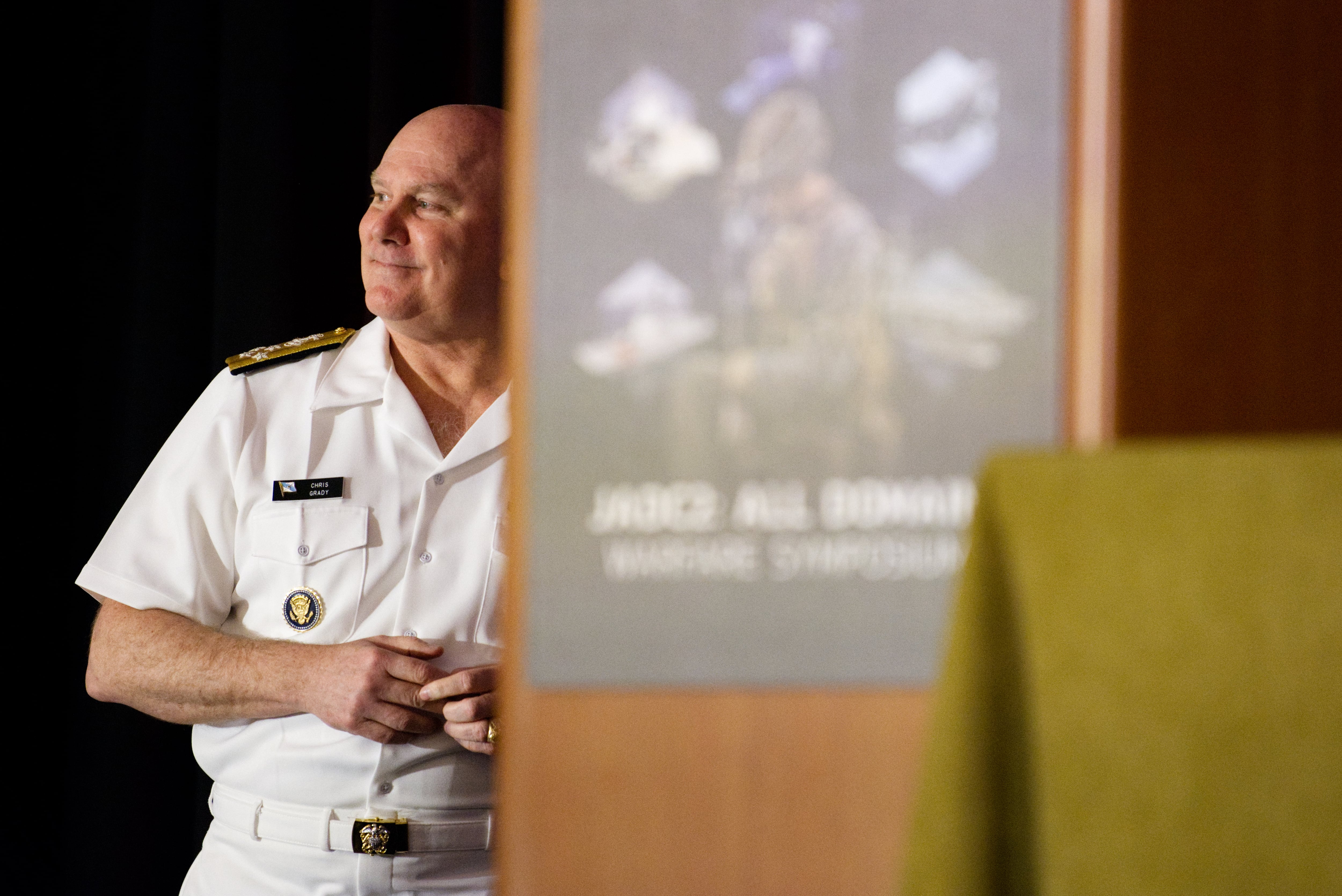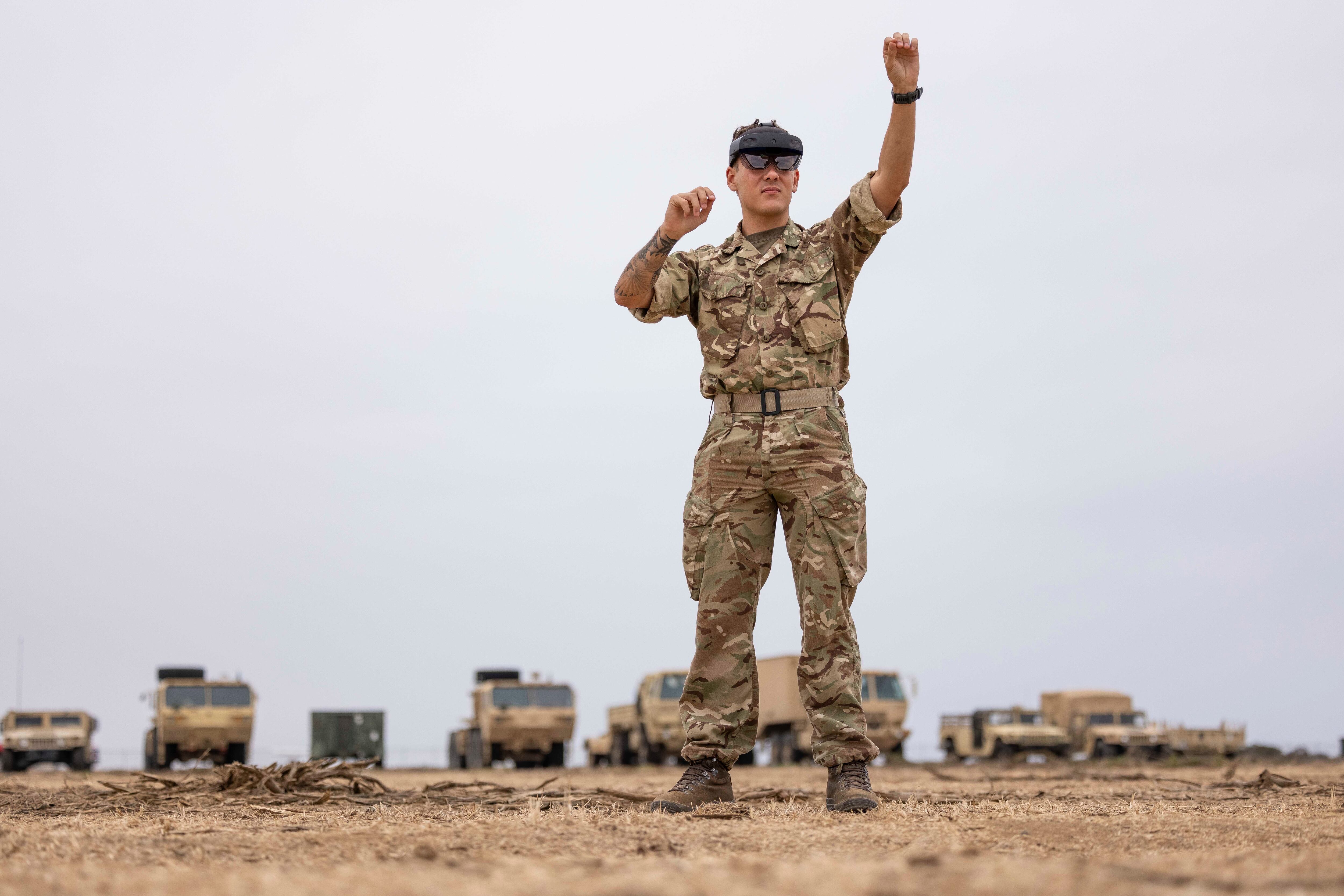WASHINGTON — To make the U.S. Department of Defense’s dreams of seamless connectivity and faster-than-ever decision making a reality, the nation’s second highest-ranking military officer is championing three focus areas.
Continuous experimentation with multiple military services, early conversations with allies and partners and leveraging the full strength of the Joint Requirements Oversight Council will be critical to achieving and sustaining Joint All-Domain Command and Control, or JADC2, according to Navy Adm. Chris Grady, the Joint Chiefs of Staff vice chairman.
“This is a new mindset. This isn’t a single technology that we buy, or any one product that we bring online, or a major program that we adopt,” he said July 18 at a National Defense Industrial Association event in Alexandria, Virginia. “And while there’s still far to go in our work, I’m here to tell you that we’re making some real progress.”
RELATED

Grady leads the so-called JROC, a body involved with the development of new capabilities and acquisition efforts.
The Pentagon is pursuing JADC2 as a means to understand and react faster on battlefields of tomorrow. By linking once-disparate forces and databases across land, air, sea, space and cyber, defense officials hope to outthink, outmaneuver and outshoot technologically advanced adversaries such as China and Russia.
The services are each contributing in their own way. The Army, for example, has Project Convergence, which last year featured maritime- and land-centric scenarios colored by threats seen in the Indo-Pacific and Europe. The U.K. and Australia participated, while others observed. A keystone of JADC2 is the mission-partner environment, which allows data from a range of militaries to be collated, secured, shared and acted upon.
“Everything is increasingly joint. The toughest problems are increasingly joint, and that includes the information domain,” Grady said. “We’ve learned through our recent past that service-specific programs are just that much more difficult to stitch together in a joint environment, unless we bake that interoperability in from the beginning.”

The next iteration of Project Convergence is expected in spring 2024 — later than usual. It will focus on testing at the theater level, beyond the tactical level already addressed, and will examine if the joint force is getting closer to achieving what it calls a kill web, Defense News reported.
The JADC2 venture has been scrutinized by observers both inside and outside the Defense Department. Concerns exist about actual collaboration between the Army, Air Force and Navy; the metrics of success; and spending in the short- and long-terms. The department’s fiscal 2024 budget blueprint allocated $1.4 billion for the connect-everything campaign. Documents describe the money as necessary to “transform warfighting capability by delivering information advantage at the speed of relevance across” all environments.
“If the Joint Warfighting Concept is the fabric of how we fight as a joint force,” Grady said, “then JADC2 is the thread that runs through it.”
Colin Demarest was a reporter at C4ISRNET, where he covered military networks, cyber and IT. Colin had previously covered the Department of Energy and its National Nuclear Security Administration — namely Cold War cleanup and nuclear weapons development — for a daily newspaper in South Carolina. Colin is also an award-winning photographer.








